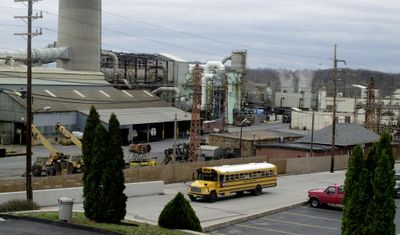EPA adopts stricter limits on lead
Eighteen counties may not meet standards

WASHINGTON – Three decades after removing lead from gasoline, the Environmental Protection Agency is slashing the amount of the toxic metal that will be allowed in the nation’s air by 90 percent.
EPA officials, who were under a federal court order to set a new health standard for lead by midnight Wednesday, said the new limit would better protect health, especially children’s health. Children can inhale lead particles released from smelters, mines and waste incinerators and ingest it after it settles on surfaces.
Exposure to even low levels of lead early in life can affect learning, IQ and memory in children. Lead can also cause cardiovascular, blood pressure and kidney problems in adults.
“Our nation’s air is cleaner today than just a generation ago, and last night I built upon this progress by signing the strongest air quality standards for lead in our nation’s history,” Stephen Johnson, the EPA administrator, said Thursday. “Thanks to this stronger standard, EPA will protect my children from remaining sources of airborne lead.”
The new limit – 0.15 micrograms per cubic meter – is the first update to the lead standard since 1978, when it helped phase out leaded gasoline. It is 10 times lower than the old standard.
The EPA estimates that 18 counties in a dozen states across the country will violate the new standard, requiring state and local governments to find ways to further reduce lead emissions from smelters, metal mines and other sources.
A representative for the Association of Battery Recyclers said the new standard would be difficult to meet. Several members of the group, which represents 14 facilities that recycle lead from car batteries, met on Oct. 2 with the White House and the EPA and were hoping for a less stringent standard.
The limit announced Thursday is in the lower end of a range recommended in May by the agency’s independent scientific advisory panel. By contrast, the Bush administration did not follow its own staff’s advice or its science advisers when it set new health standards for smog and soot that were less stringent than recommendations.
“We have put in the best controls and we are going to still have compliance problems,” said Robert Steinwurtzel, an attorney for the group. “We explained to them our concerns that if the standard was promulgated at lower end of EPA’s range it would threaten viability of industry.”
Environmentalists hailed the move, but said the agency could have done more to monitor emissions to ensure that the standard is met. Along with the announcement of a new standard, the EPA said it would require lead to be measured in 101 cities across the country and near sources that release at least one ton of lead per year. Advocates said Thursday the monitoring plan would exclude hundreds of sources of lead.
“We commend EPA for taking a giant step in the right direction, but they need to greatly expand the lead monitoring network if they hope to enforce this standard,” said Gina Solomon, a scientist with the Natural Resource Defense Council.
The EPA will designate areas of the country that fail to meet the new standard by October 2011. Based on air quality data collected from 2005-2007, 18 counties in Alabama, Colorado, Florida, Illinois, Indiana, Minnesota, Missouri, New Jersey, Ohio, Pennsylvania, Tennessee and Texas would fail to meet the standard.
The EPA said the cost of the reductions would be from $150 million to $2.8 billion, but the standard would produce economic benefits of approximately $3.7 billion to $6.9 billion. The EPA assumed that children would be smarter and earn more money as a result of less lead in the air when it calculated the benefits.